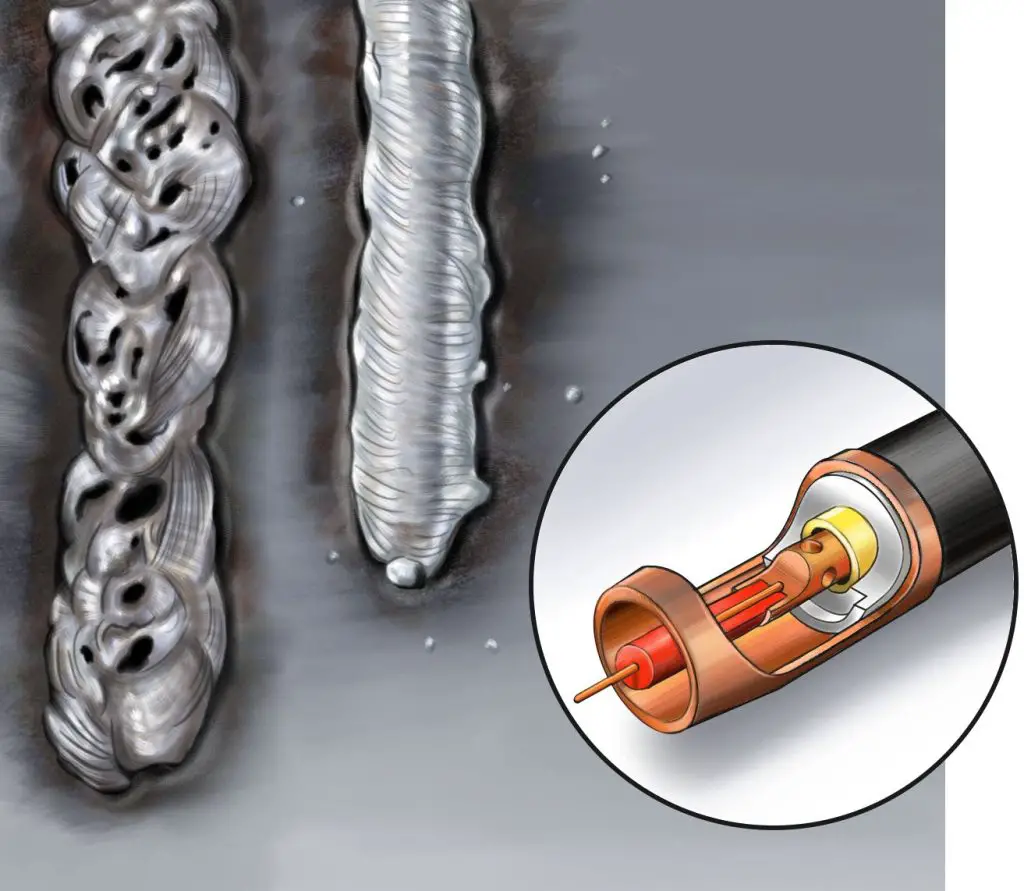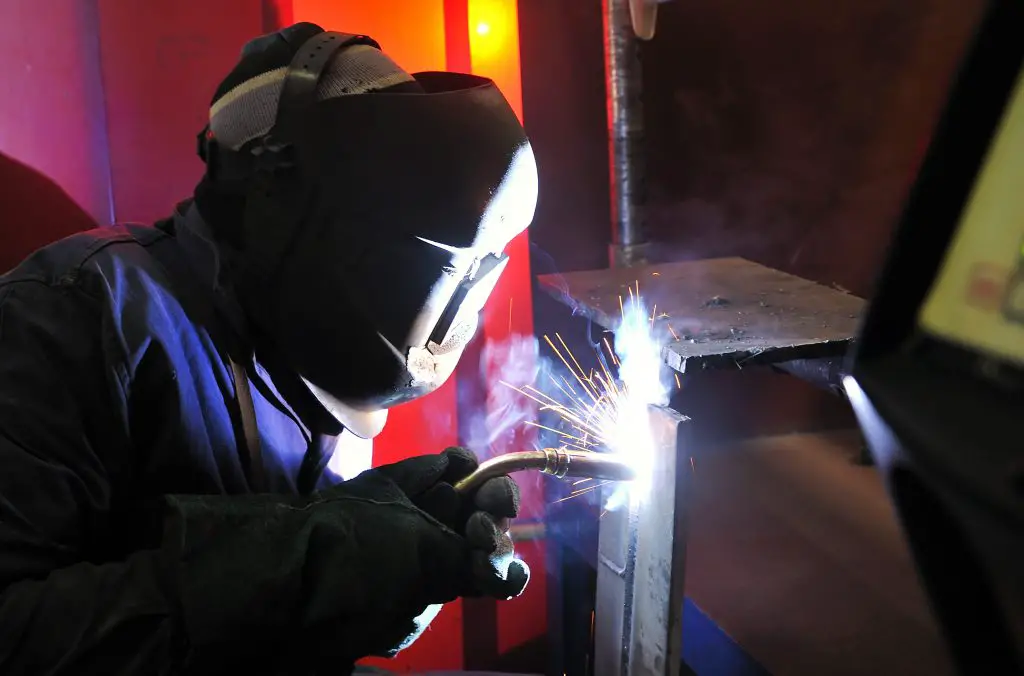MIG vs TIG Welding: Which is Better?
When it comes to metalworking tools and techniques there’s always some room for debate about the best way to perform a job. It’s no different when it comes to welding, where you’ll encounter a variety of tools and approaches which all merit consideration. Making the right choice can be the difference between a successful hobby or venture and a garage full of unused equipment.
When it comes to metal inert gas (MIG) and tungsten inert gas (TIG) welding and which one is better, there’s really no debate. The answer is both! MIG and TIG are two of the most common welding processes and can be used to perform many of the same jobs.
Still, there are cases where one is better suited than the other. It’s not about which type of welding is best – it’s about which type of welding is best for the situation.
That information may not be helpful on its own, fortunately, the easiest way to choose is by developing a better understanding of these two arc welding processes.
Similarities between MIG and TIG
Both MIG and TIG welding processes use electricity passing through a wire electrode to generate an arc hot enough to melt the workpieces and fuse them together.
With both TIG and MIG welding, the arc and work area is protected by a stream of inert shielding gas. This shielding gas protects the arc and molten weld puddle to prevent impurities and oxidization from lowering the quality of welds, leading to weak brittle results.

Both MIG and TIG welding techniques use a metal filler material to backfill the gap between workpieces and strengthen the weld. This material might be the same type of metal as the workpieces, or an alloy composed to create a stronger weld. While this is similar to stick/flux core welding, the composition of the feedstock used in MIG and TIG welding combined with the use of inert shielding gas results in cleaner welds that require very little cleaning or grinding to finish.
To summarize, both MIG and TIG welding processes can tackle a lot of the same welding tasks, Both use a shielded electric arc to generate the intense heat required to fuse metal. This is where the majority of the similarities end. The remaining details and differences between TIG and MIG welding have a big impact on the approaches and outcomes you can expect from MIG vs TIG.
MIG vs TIG Welding: Big Differences
The biggest differences between MIG and TIG processes comes down to the type of electrode each device uses to generate the arc. MIG welders use a consumable, machine fed wire which doubles as both electrode and filler material. This electrode wire is available in a variety of diameters and compositions – most commonly carbon steel, stainless steel, and aluminum. TIG welding, by contrast, uses a non-consumable tungsten electrode and hand-fed filler rods to join the workpieces together.
In addition, the type of gases used for both MIG and TIG welding processes are slightly different.
MIG welders commonly use a blend of argon and carbon dioxide at a 3 to 1 ratio.
The tungsten electrode used in TIG welding is more sensitive and reactive to gases like carbon dioxide and oxygen. Their presence during welding could lead to oxidation and weakness in the weld. Because of this, TIG welding usually calls for a pure inert gas such as argon for shielding, although there are some special cases where other gases such as helium are used.
While many projects can be tackled using either MIG or TIG techniques, the differences in these processes can have a big impact on the speed, cost, and quality of the work. Exploring these differences more closely can help to really clarify the picture for you when it comes to MIG vs TIG.
Arc Differences
When it comes to arc welding the narrower the arc the hotter and more powerful it is. A hotter arc allows for deeper penetration and greater precision.
TIG Welding Arc Characteristics
In TIG welding, occasionally called gas tungsten arc welding (GTAW), the tungsten electrode produces a narrow arc which is very precise and can direct it’s heat at a fine point. More heat in a smaller area makes TIG welding ideal for jobs requiring intricate welds or forming a seal.
MIG Welding Arc Characteristics
The arc created by a MIG welder, sometimes called a gas metal arc welding (GMAW) machine, is wider and distributes heat over a larger surface area. This means that with the MIG process you can quickly make clean, strong, flat welds and joints.
Efficiency of the MIG and TIG Arc
When it comes to efficiency, for the same amperage a TIG welding torch will produce more focused heat than a MIG welder. More accuracy and better penetration can make it easier to generate precision welds. It’s this precision and the quality of welds that helps in part to define the TIG welding process.
While this might seem like it settles the debate about which kind of welder is superior, there’s a lot more to consider than just precision, penetration and efficiency when it comes to choosing a welding process.
Like what you see here? Sign up for more great tips and information every Saturday from Bailey Line Road.
Feed and Operation
All MIG welders hold a spool of consumable wire internally. This wire is automatically fed through the power cable and handle of the machine during use, coming out by itself into the molten weld puddle. TIG welding, by contrast, has no automatic feed of filler metal. Instead, you hold and move the TIG torch with one hand, and hold a piece of filler rod in the other. Hand motions must be coordinated for TIG welding to work well. It’s almost like the TIG torch tip gets moved in a small, circular pattern, and the filler rod gets moved in a similar circular pattern, but the opposite rotation.

Point and Shoot Welding
The MIG welding process is designed to weld metal quickly and easily with little mess. The MIG welding gun, or torch, is designed for one-handed, point and shoot operation. The gun is oriented at an angle which gives you access to the workpiece. Wire feedstock is spool-fed through the gun automatically by the welding machine. This wire serves as both electrode and filler material – you just need to touch the electrode to the workpieces and pull the trigger on the welding torch to generate the arc. The wire feedstock metal is spool-fed automatically by the welding machine.
Because of this the MIG welding process is very fast. In manufacturing, time is often money. When quality MIG welds are good enough, MIG is often the best approach. What MIG welders do very well, very easily, can be complicated or time consuming for the TIG welder.
Two Hands for TIG Welding Process
The TIG welding torch consists of a non-consumable tungsten electrode which protrudes from the gun at an angle much like the MIG welding torch. The TIG torch produces an arc when the electrode is brought close to the workpiece and the trigger is depressed – also similar to the MIG welder. This arc is so hot that it can be used to tack together two pieces of metal without use of a filler rod.
The big difference in operation is that the TIG process requires that filler metal be hand-fed into the arc to help form the weld bead. TIG welders commonly use a foot pedal to control the amperage of the arc precisely on the fly.
Although this slower process is significantly more labor intensive, in skilled hands TIG welding produces a much higher weld quality. TIG can be used to make clean, precise welds that you would struggle to duplicate with other techniques such as MIG.
TIG vs MIG Welding Learning Curves
When it comes to which kind of welding is easier to pick up, there’s no debate. MIG us much easier.
TIG Welding Requires More Skill
TIG welding has a lot more moving parts than MIG. It requires coordination and precision to feed the filler metal off-hand while operating the welding torch. The basics can be picked up in as little as 30 minutes to 40 hours or so. On the other hand, mastering the most technical TIG welding tasks takes time to learn. There’s a certain artistry to TIG welding that only comes with mastery and experience.
TIG equipment is more complicated and has more nuanced operation than the MIG apparatus.
MIG is Easier to Learn
MIG welding is both easier to learn, and easier to master. This is why MIG welding has been compared to welding with a hot glue gun by fans and detractors alike. Metal inert gas welding is one of the easiest welding processes to learn. You can become proficient at MIG welding quickly with just a bit of practice. It’s easy to learn the basics skills and techniques required to perform real work.
TIG vs MIG: Differences in the Welds
The differences between MIG and TIG welding are stacking up, but what does it all mean in terms of the actual welds created by each process? What are differences in each one?
MIG Strong, TIG Strongest
MIG welds are very strong. A skilled MIG welder can use travel speed and torch position to quickly lay in beautiful, durable beads. MIG welds when properly executed can be as strong or stronger than the original base metal which is good enough for most practical purposes,
However, when it comes to MIG and TIG welding, the common perception is that TIG welding produces a stronger weld. It’s technically true, too. When it comes to observable penetration and weld strength TIG is technically superior to other common welding methods. For example, TIG tack welds are noticeably stronger than similar MIG welds and harder to break.
Most of the time, however, the differences in strength between MIG and TIG welds isn’t a deciding factor between which approach to take. Ultimately both methods produce strong, durable welds.
Still, the thing that makes TIG welds stronger does have an advantage. TIG welds get their strength because a greater consistency can be achieved with the fill and penetration. TIG beads usually have fewer pinholes and other defects. Because of this TIG is frequently the best choice for creating an airtight seam. This makes TIG welding ideally suited for construction of tanks, pipes, and pressurized vessels.
Appearance Can Be Everything
When it comes to a good looking weld, a neatly executed TIG weld is often used as the gold standard. With TIG a skilled welder can create clean, technically ornate beads. A quality TIG weld usually requires little cleaning or polishing. When appearance is a priority – especially when the weld will be unpainted or naked – TIG welds are usually better looking.
MIG welding is often chosen to weld steel which is to be painted or coated. That doesn’t mean that MIG welds are ugly, far from it. Much like when it comes to strength, a properly executed MIG weld can be pretty, too. In cases where the appearance isn’t the most important thing, the faster MIG process becomes very easy on the eyes.
The Material is Not Immaterial
The material might be the single most influential factor in choosing between MIG and TIG welding. Gas tungsten arc welding (TIG) can fuse steel, stainless steel, chromoly, aluminum, nickel alloys, magnesium, copper, brass, bronze, and even gold. Because of this TIG welding is dominant across the aerospace and automotive industries. TIG is also one of the best methods for welding ferrous materials.
Metal inert gas welding (MIG) is used to weld aluminum, steel, and stainless steel. When it comes to these materials MIG will often produce an adequate weld much faster than TIG.
This means that if you’ll be welding something more exotic than steel or aluminum, TIG may be the only option.
Matters of Size
It’s not just the type of material to be welded that matters. The thickness of the weld metals can determine which technique is most effective and will produce the best results. When it comes to working with small and thin materials there isn’t a better option than TIG. The accurate bead and hotter arc allow for a narrower and cleaner end results.
On the other hand when working with thick materials requiring longer continuous runs it makes sense to choose MIG welding. With large and thick materials the consumable wire filler rod used in MIG is better at fusing the metal together. TIG torches can struggle to heat thicker workpieces sufficiently to create proper bonds.
Recap: Choosing Between MIG and TIG
You’ve learned a lot about both types of welding process. Let’s recap:
Both MIG and TIG Welding are types of gas-shielded electric arc welding.
A MIG welder is designed for one-handed point-and-shoot operation. MIG is the easiest welding technique to learn and master. MIG welders can create attractive, strong welds very quickly compared to other processes. Because of this, when speed or work rate are prioritized over appearance, MIG welding becomes an obvious choice.
TIG welding uses a manually fed welding rod and a foot pedal to control the amperage. This leads to a more complex and precise welding process. It takes more time to pick up the basic skills required for TIG welding, and much longer to master them. Still, TIG welding is unbeatable when it comes to welding thinner materials. When working with small or thin workpieces, or when the appearance of the weld is a priority, TIG is a superior welding process.
One Educated Opinion
So which one is it? The faster, easier-to-master might MIG? The powerful penetration and performance of TIG? If you’re just starting out with welding and are trying to learn the basics there’s a lot less room for debate. MIG welding lets users jump in quickly and with some basic training on the principles you can become competent very fast. MIG is more than adequate for most hobby projects and has a lower operating cost than TIG welders. Many full-featured MIG welders can also be configured to use a TIG torch and controls. Technically, this boosts the versatility of having just one welding machine, but in practice most people don’t like to switch back and forth because it takes time and is a hassle.
Even most professional welding schools prefer to start users out with MIG welding. Once students learn the basics they can build confidence and experience quickly which translates to the more complex welding processes. Even if you plan on working with thin or exotic metals that only TIG welding does right it can be very helpful to have a MIG welding foundation.











